Crisp vadas and soft idlis, with a side of piping hot sambhar—or fluffy appams paired with luscious vegetable stew? When it comes to South Indian delicacies, you’re quite spoiled for choice!
A South Indian cook is very particular when it comes to cooking up these wholesome, aromatic meals. The spice blend has to be just right, the curry must be cooked in an earthen pot for the perfect flavours, and the grinding can only be done in a traditional ammi kal (grinding stone). And to serve up these delectable meals, you need a kitchen that’s efficient and functional, with space for all the appliances and ingredients that go into making these dishes.
How can you design a South Indian kitchen that reflects the design sensibilities of the South, and matches up to the South Indian mami’s discerning eye for functionality? We’ve made it easy for you! Here are some distinguishing features of South Indian kitchens.
Whether the kitchen is large and spacious, or small and compact, what’s important is that every inch of space in a South Indian kitchen gets used efficiently. Quite often there are two rows of upper cabinets, which are needed to store the dozens of traditional vessels that are needed for special occasions.
Maximise functionality with thoughtfully designed accessories that help to organise and store gadgets and appliances, without any hint of clutter. And make sure the aesthetics are on point too—like in this lovely and warm, wood-encased traditional kitchen below!
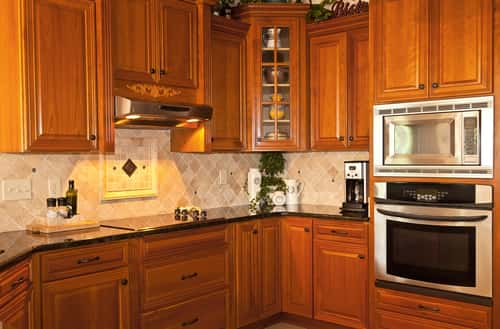
There’s a lot of love—and a great many ingredients—that go into South Indian cooking. Red hot chillis, biryani mixes, fragrant coriander and garam masalas, besides a host of different lentils and cereals, should be readily available for dishing up the perfect meal.
All these spices and mixes take up space, and must be readily accessible when needed. If space permits, a storeroom would be just the thing. A pull out pantry with heavy-duty drawers or a well-planned corner larder could do just as well.
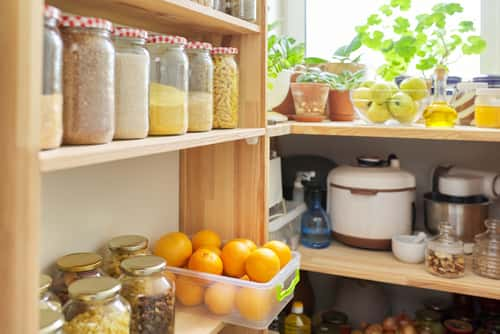
As any mami will tell you, those delicious dishes don’t come easy. There’s a lot of prep involved, and the cooking itself involves a lot of sautéing, boiling, frying and seasoning. At the end of it all, your kitchen could end up looking like a war zone!
To keep the surfaces looking as good as new, even at the end of a long bout of cooking, choose materials that do not attract oil and grime and can be wiped clean easily. Non-porous countertops like granite and ceramic or vitrified tile backsplashes are perfect for South Indian cooking.
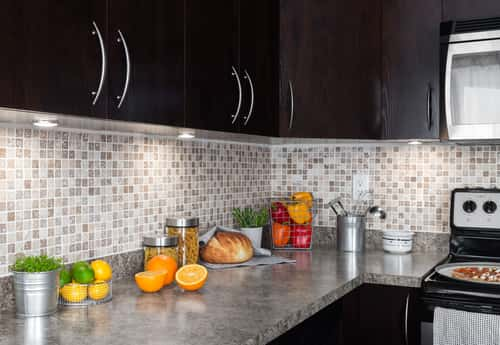

We’ve already warned you. No South Indian cook who is true to their roots will ever give away their stone aatukal, iron appam chetti or brass sevai nazhi. Coconut doesn’t taste the same unless it is scraped with a traditional cherava. Payasam gets the right consistency only when it is made in a large brass uruli. Even modern cooks swear by their wet grinders and mixer-blenders.
While these traditional tools make the food taste awesome, the space to store them needs to be factored in when designing the kitchen. If a work area or utility space is available, that’s where these heavy stone and metal items could be tucked away. If not, then you’ll have to accommodate them in the kitchen. Be warned: fixed shelves work best, as pull out drawers will usually not be able to take the load of these treasured tools.
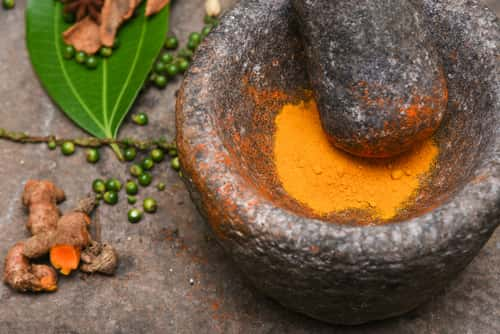
South Indians love their pickles! They will eat pickles with anything and everything—rice, rotis, upma or dosa. These pickles taste best when they are homemade, and you will rarely find a South Indian home without its stash of mouth-watering pickles in those familiar ceramic pickle jars.
Take note: for the best flavour, pickles must be stored in a cool and dark place, far from any moisture. And it’s only after a couple of weeks that homemade pickle is ready to eat. So do plan the right space where the pickles can steep in the flavours, undisturbed!
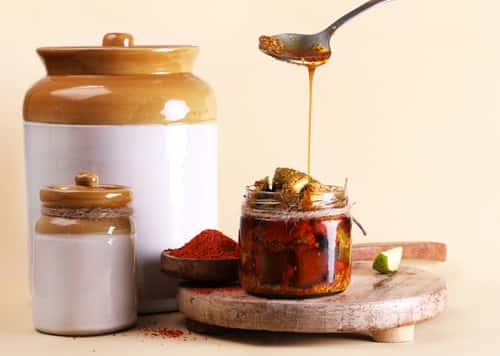
The aroma of freshly brewed filter coffee never really leaves a South Indian kitchen! You’ll have to give the ubiquitous coffee filter and davara-tumbler pride of place, as this coffee never tastes the same in any other utensil. A coffee corner would never be out of place in a South Indian kitchen.
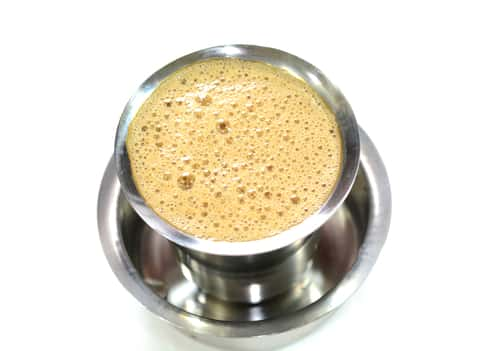
We’ve never quite figured out why, but every South Indian kitchen has a motley collection of pots and pans in all shapes and sizes. Plan to hang them somewhere where they can be accessed in a jiffy, either above the sink, so they can drip down into the drainboard, or tucked away inside a drawer where they can be easily accessed when needed.
Note the row of potted plants on the window in the kitchen shown below. Coriander and chillis are essentials that spice up just about every dish, and it would be nice to have these herbs fresh from your own kitchen garden!
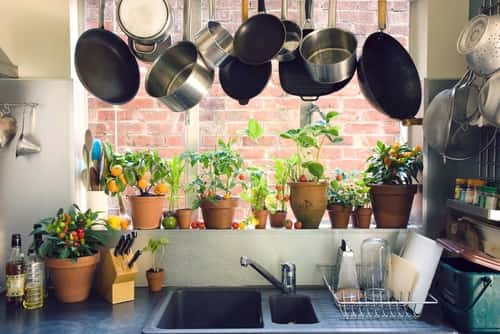
Need help with packing all these South Indian essentials into your kitchen at home? We’ve lined up design experts who are only too happy to help! Call HomeLane today, and let’s connect!

 EXPLORE MORE
EXPLORE MOREExplore This Vibrant Bangalore Home That Revels in the Interplay of Patterns and Textures!
This Stunning Chennai Home Channels Nuanced Character and Tonality
Step Into This Minimal Chennai Home, and Get Wrapped in Comfort!
This Compact Chennai Apartment Is an Ode to Smart Design and Functionality!
 EXPLORE MORE
EXPLORE MOREExplore This Vibrant Bangalore Home That Revels in the Interplay of Patterns and Textures!
This Stunning Chennai Home Channels Nuanced Character and Tonality
Step Into This Minimal Chennai Home, and Get Wrapped in Comfort!
This Compact Chennai Apartment Is an Ode to Smart Design and Functionality!
By submitting this form, you agree to the privacy policy and terms of use